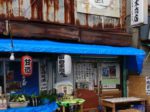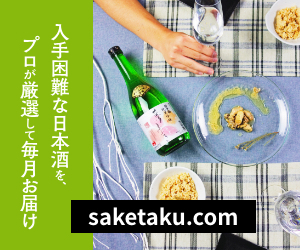- Home
- Sake
- Kenbishi
Kenbishi(Hyogo)
| Specially designated name | Honjozo | |
|---|---|---|
| Type | ||
| Material Rice | Yamadanishiki | |
| Polishing ratio | 70% | |
| Alcohol | 15度 | |
| Sake meter value | ±0 | |
| Acid Level | 1.6 | |
| Amino Level | ||
| Rich / Light | ||
| Dry / Sweet | ||
| Taste Type |
| Specially designated name | Honjozo |
|---|---|
| Type | |
| Material Rice | Yamadanishiki |
| Polishing ratio | 70% |
| Alcohol | 15度 |
| Sake meter value | ±0 |
| Acid Level | 1.6 |
| Amino Level | |
| Rich / Light | |
| Dry / Sweet | |
| Taste Type |
| Brewed by | KENBISHI SAKE Brewering Co., Ltd. |
|---|---|
| Production | Hyogo |
| Brewing Method | |
| Sake Yeast | |
| Recommended temperature | hot warm |
Product Description
Sake Search Review
It’s made in Itami City in Hyogo Prefecture, and was called “Kudari-zake”, which means sake sent to Edo (Tokyo) in the Edo period.
Sake which weren’t sent to Edo were called “Kudaranai-sake” (“kudaranai” is the negative form of “kudaru”).
After this story, the word “kudaranai” started to mean “boring” (as “Kudaranai-sake” was worthless to be sent to Edo).
The origin of the word is this “Kenbishi”.
In the website of Kenbishi’s brewry, “Kenbishi Shuzo”, there are more stories about this sake such as the sake was selected as the special sake for 8th Shogun, Yoshimune Tokugawa.
The taste was, like it’s meant to be the opposite of “boring”, very unique.
It should depend on the person who try it, but in my case, I thought that it was like Shokoshu (Chinese sake) which has stronger sour taste.
But the unique flavor was not so strong when it was served hot.




